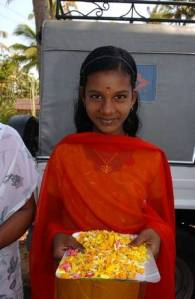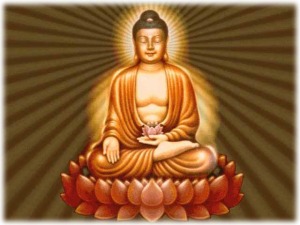When I was traveling to India on business in years past, I did not give much attention to learning about the history of the country. This time around, things are different, not only because we are dedicating a whole trip to explore India and Nepal as tourists, but also because I now have a new career as a travel writer and a blogger ( I invite you to visit my travel blog BonVoyageurs.com and to enter your email address on the home page and perhaps become the 1,000th follower of the blog!). I now want to know as much as possible about the people who live in India. Questions which I had asked myself regularly over the years, but had quickly brushed aside to focus on more pressing matters, are now popping up in my head clamoring for attention and I am finally addressing them. I need to better understand so that I can better plan our trip there.
What is a Hindu?
The population of India is about 1.2 billion people, of which 80% are Hindus and 13% Muslims. So that means about one billion Hindus in India. Who are these people? What is a Hindu? After reading up on the subject and finding that, like everything else dealing with that exotic and ancient world, nothing is simple and straightforward, my short answer is that a Hindu is someone whose ancestry is from the Indian subcontinent and whose culture is one of the many offshoots of the Vedic scriptures religions (which predate Christianity and Islam by almost two thousand years).
Apparently, the word Hindu comes from the Persians who started calling Hindus the people living around or beyond the Hindus river (a river which nowadays happens to flow within Pakistan, as a result of the partition of India). Those people all seemed to follow religions derived from the very ancient Vedic scriptures, which I think are the oldest Sanskrit writings in the world, and for all I know, the oldest writings in the world period, dating back to something like 1,500 years BC; the first religion was called Hinduism, but over the centuries it gave rise to a number of offshoots ranging from Jainism to Sikhism to Buddhism (around 400 BC). Later, like a thousand years later, when the Persians and other muslims such as the Mughals started invading and conquering the Indian subcontinent, they simply called the locals Hindus. So you now had Hindus and Muslims. There is a Hinduism religion but you don’t have to be Hindu to practice it and there are many Hindus who practice other religions or no religion at all. However, it would appear that when an Hindu converts to religions which are not native to India, such as Islam or Christianity (willingly or not), he leaves the Hindu category. When the British East India Company and the British Empire later arrived, sorting out who is who was simple: they just lumped together all the local “tribes” who were not Muslim or Christian and called them Hindus. In the end, the Hindus are really a melting pot of many different types of people sharing some common traits.
Now the question becomes: how different are all these local Hindu people from region to region and what should I know about them?
What is a Dalit?
The most objectionable thing about India is the continued existence of the Dalits, the “untouchables”. The caste system of India and the untouchables are, as so many atrocities in history, the results of religious tenets. There are an estimated 160 million people today in India who are treated as outcasts and “impure”; it is estimated that about 40 million of them are effectively enslaved, often under the weight of having to repay debts of their ancestors! All that because the principles of the Hinduism religion dictate the caste into which every person is born; there are four main caste categories and thousands of sub-castes (the untouchables are the outcasts, those not even worthy of the lowest possible caste level, not worthy of being human).
Even though it is technically illegal, the practice of abominable treatment of the “untouchables” shows every sign of continuing on a large scale to this day; police as well as the rest of society often turn a blind eye to the crimes. Women are gang-raped, paraded naked in the streets, sold to brothels, tortured and killed without even a police report being filed. The gang rape stories which made the news around the words recently related to people other than the untouchables; the gang rapes of untouchable women, which occur regularly, don’t generate outcries and don’t even make the local news. Simply walking through an upper caste neighborhood is a life-threatening offense for a Dalit. Ninety percent of the poor people in India are Dalits, ninety five percent of all illiterate people in India are Dalits, which helps explain why India has the greatest number of illiterate people in the world. UNESCO reports that, in rural India, only a third of grade 3 level students can tell the time and only 25% can subtract two-digit numbers. This is not so amazing as the fact that it does not speak for those youngsters who are not in school at all, of which India also has the greatest number. Apparently, a Dalit cannot wear shoes in the presence of an upper caste person! And to think that we are in the twenty-first century and that we are about to travel to India and spend money there …
Now the question becomes: is there anything I can do to help improve that situation?
What is a Maharajah?
There are a lot of maharajahs in India, or at least there were. When the British Empire gave India its independence in 1947, there were still about 600 maharajahs in India. The British directly ruled one part of India, and ruled the rest indirectly through “representatives” at the court of each maharajah. Although the litteral translation of this sanskrit word is “great king”, and originally a maharajah was a great king ruling a vast territory, the reality is that, over time, with great estates being divided up over and over again, a maharajah became a term more comparable to a “lord” than to a king. The maharajah was the ruler of a small piece of territory, just as the “seigneurs” were in the French feudal system or the “lords” in the British feudal system. And there are many grades of maharajahs, just as there are many grades of nobility in Western feudal systems. Most maharajahs in the end still paid tribute to the “king”, who could be the Mughal emperor or the King of England, depending on which century we are talking about.
Given the caste system of India, a maharajah pretty much accumulated all the wealth available in his fiefdom, so those guys got pretty rich and built themselves some pretty big castles. The British organized the maharajahs’ agreement to India’s independence in 1947, which ended the maharajahs’ princely powers but not their wealth. They are still around today, India’s nobility if you wish, with a lot of them having made deals with hotel chains like Taj to turn their palaces into revenue generating luxury hotels.
The question now perhaps should be: what are the maharajahs doing to eliminate the discrimination against the so-called untouchables?
What is a Buddha?
Buddha was a real person by the name of Siddharta Gautama who lived in the period of about 400 BC and ended up founding one of the world’s greatest religions, Buddhism. Buddha (which means “The Awakened One”) was born by most accounts in what is now Nepal and spent most of his life traveling around what is now the state of Uttar Pradesh in the northeast part of India (next to Nepal). He died in Kushinagar, Uttar Pradesh. His first teachings were in Sarnath, right outside Varanasi in Uttar Pradesh. I mention those names not simply because they have become some of the most holiest places in the Buddhist religion, but also because they will be part of our trip plan.
There is so much more to learn. Stay tuned ….
Stay tuned to BonVoyageurs.com for more Countries of the World as we share our joie de vivre from around the world. Luxury escapes and city breaks to Quebec City, New York, Washington, Buenos Aires. In Europe, places like Paris France, Nice France, Provence and the Cote d’Azur (French Riviera), Tuscany and Florence in Italy, Rome, Napoli and the Amalfi Coast. In Asia, countries like China, India, Nepal and so much more!




How beautifully you’re setting the stage
for OUR next great adventure!